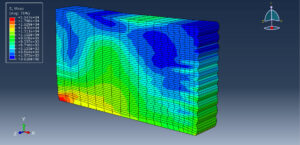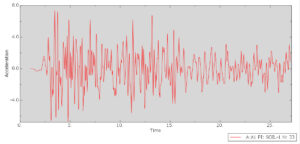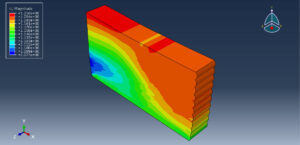In this tutorial, the Seismic analysis of geosynthetic-reinforced soil in Abaqus has been investigated. The soil is modeled as a two-dimensional part. The geosynthetic is modeled as a wire part. You can see a figure of the assembled parts below

Geosynthetic-reinforced soil (GRS) structures perform well during strong earthquakes due to their flexibility and integrity. This is evident from the 1994 Mw 6.8 Northridge earthquake, with recorded peak ground acceleration (PGA) values greater than 0.60 g. The variables associated with seismic ground motions, soil properties, and reinforcement parameters are full of uncertainties and bring threats to the dynamic stability of GRS structures.
In the first model, the geosynthetic is placed in the soil, and in the second model, the earthquake load is applied to the soil with geosynthetic reinforcement. In the first model, the general static step, and in the second model, the implicit step is considered
The proper interactions, boundaries, and meshes are assigned to all parts. After the simulation, all results, such as stress, strain, displacement, acceleration, and others are available. You can see some figures of the results below








You can provide this simulation’s CAE, INP, and English video files here. The cost of these files is Twenty-Six Euros. you can click on the bellow bottom to begin the process
You can purchase the tutorial through a PayPal account, a Visa, or a Master card, just before payment, send me an email to this address: karampourp@gmail.com
 Abaqus tutorials Abaqus tutorials
Abaqus tutorials Abaqus tutorials




